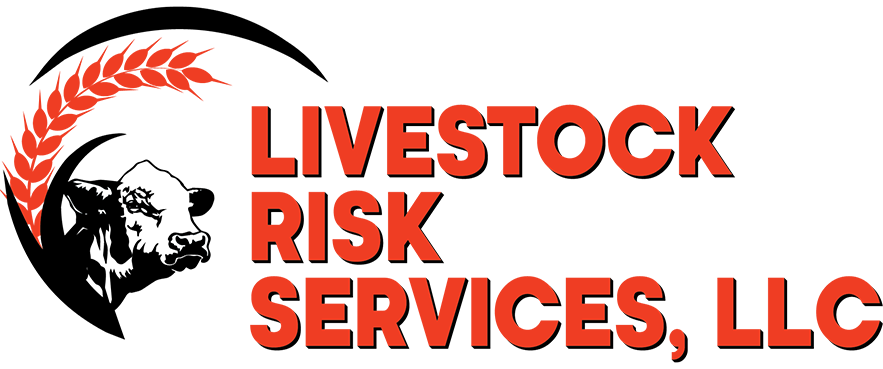Understanding Animals Threat Defense (LRP) Insurance: A Comprehensive Overview
Browsing the realm of livestock danger security (LRP) insurance policy can be an intricate undertaking for lots of in the agricultural market. From just how LRP insurance works to the numerous coverage options available, there is much to uncover in this detailed overview that can possibly form the method animals producers approach threat management in their services.

How LRP Insurance Works
Occasionally, understanding the technicians of Animals Threat Security (LRP) insurance can be intricate, however breaking down how it functions can give quality for farmers and breeders. LRP insurance is a risk monitoring tool designed to protect animals producers against unforeseen cost decreases. The policy permits producers to establish an insurance coverage level based upon their certain requirements, choosing the number of head, weight array, and coverage price. When the plan remains in area, if market costs drop below the insurance coverage price, manufacturers can file a case for the difference. It's important to keep in mind that LRP insurance policy is not an earnings assurance; instead, it concentrates solely on price danger defense. The protection duration typically ranges from 13 to 52 weeks, giving versatility for manufacturers to pick a duration that lines up with their manufacturing cycle. By making use of LRP insurance, farmers and herdsmans can minimize the financial dangers connected with rising and fall market value, ensuring higher stability in their operations.
Qualification and Protection Options

When it comes to protection choices, LRP insurance policy supplies manufacturers the flexibility to choose the protection degree, protection period, and endorsements that finest fit their threat monitoring demands. By comprehending the qualification requirements and protection choices offered, livestock producers can make educated decisions to take care of threat effectively.
Benefits And Drawbacks of LRP Insurance
When evaluating Animals Threat Security (LRP) insurance policy, it is important for livestock producers to weigh the advantages and downsides intrinsic in this risk management device.

One of the primary advantages of LRP insurance is its capacity to supply protection versus a decline in livestock prices. In addition, LRP insurance policy offers a level of flexibility, enabling producers to personalize insurance coverage degrees and policy periods to match their particular needs.
Nevertheless, there are additionally some downsides to take into consideration. One constraint of LRP insurance policy is that it does not shield versus all kinds of dangers, such as illness outbreaks or natural disasters. Furthermore, costs can occasionally be costly, especially for manufacturers with huge livestock herds. It is important for producers to thoroughly evaluate their individual threat direct exposure and monetary circumstance to figure out if LRP insurance coverage is the right threat administration tool for their procedure.
Comprehending LRP Insurance Premiums

Tips for Optimizing LRP Benefits
Taking full advantage of the benefits of Livestock Risk Security (LRP) insurance coverage calls for tactical planning and positive danger monitoring - Bagley Risk Management. To make the many of your LRP coverage, think about the complying with tips:
Regularly Evaluate Market Problems: Keep informed regarding market trends and cost fluctuations in the animals sector. By keeping track of these elements, you can make informed decisions concerning when to purchase LRP protection to secure versus prospective losses.
Set Realistic Protection Levels: When selecting coverage degrees, consider your manufacturing expenses, market value of animals, and potential threats - Bagley Risk Management. Establishing sensible insurance coverage levels guarantees that you are appropriately safeguarded without paying too much for unneeded insurance
Diversify Your Protection: Rather than depending only on LRP insurance, think about expanding your threat monitoring techniques. Integrating LRP with other threat administration tools such as futures contracts or options can give detailed protection against market unpredictabilities.
Evaluation and Adjust Insurance Coverage Regularly: As market problems change, occasionally examine your LRP coverage to guarantee it aligns with your existing danger direct exposure. Adjusting protection degrees and timing of acquisitions can aid maximize your threat security strategy. By adhering to these suggestions, go to this website you can make best use of the benefits of LRP insurance and secure your animals operation versus unexpected threats.
Conclusion
Finally, livestock threat protection (LRP) insurance policy is investigate this site an important device for farmers to manage the monetary threats associated with their livestock procedures. By understanding exactly how LRP functions, qualification and protection alternatives, as well as the pros and disadvantages of this insurance, farmers can make educated decisions to shield their incomes. By meticulously considering LRP premiums and carrying out approaches to make best use of advantages, farmers can mitigate prospective losses and make sure the sustainability of their procedures.
Animals manufacturers interested in getting Animals Threat Protection (LRP) insurance can check out a variety of qualification standards and protection alternatives customized to their specific livestock operations.When it comes to protection choices, LRP insurance coverage offers manufacturers the flexibility to pick the insurance coverage degree, coverage duration, and endorsements that best match their threat administration demands.To comprehend the details of Animals Danger Security (LRP) insurance coverage completely, comprehending the elements influencing LRP insurance premiums is crucial. LRP insurance premiums are determined by numerous aspects, including the coverage degree selected, the expected rate of animals at the end of the protection period, the type of animals being guaranteed, and the size of the protection period.Testimonial and Change Protection Consistently: As market problems transform, occasionally review your LRP protection to ensure it lines up with your existing danger exposure.